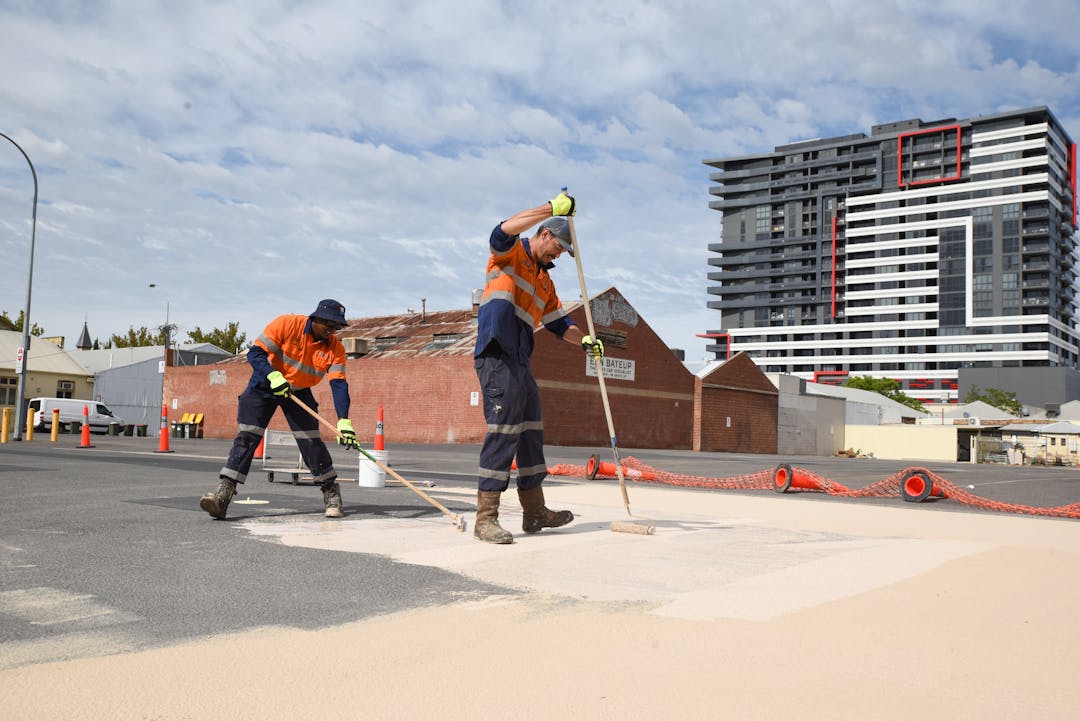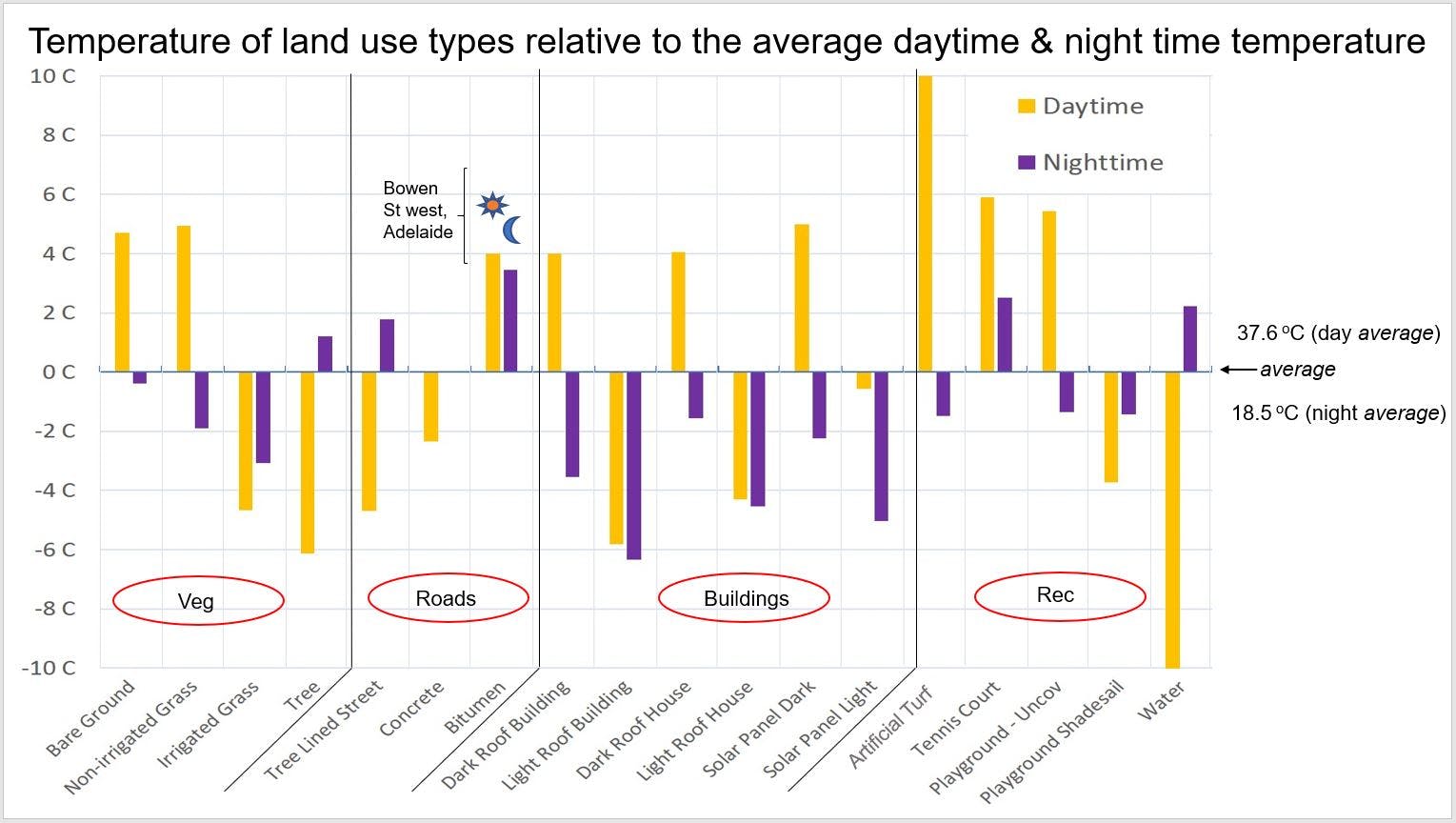Cool Road Adelaide
Consultation has concluded.

Thank you for interacting with our 'Cool Road' during the 2019/20 summer and providing your feedback!
Project Information
Dark bitumen roads contribute to heating cities and urban areas – known as the urban heat island effect. To combat this, we are considering ways to make our cities more comfortable for everyone.
This project piloted the performance of three cool road surface products on Bowen Street West in Adelaide CBD during the summer 2019/20. The three products were CoolSeal by GuardTop as well as JetCool and JetBloc by Fulton Hogan. These are also road preservation products, used to lengthen the life span of a road and therefore increase the time span between having to dig up and relay.
The treated road was monitored to see how the different products reduce surface and ambient air temperature and preserve the road, as well as the experiences of local residents, road users, pedestrians and businesses.
This project was the first in Australia to capture both the day and night-time surface temperature data of cool roads. The results provide evidence that cool road sealants can contribute to temperature reduction on the road surface during the day and into the evening after sunset.
Combined with the cooling benefits of street trees, targeted irrigation, and other cooling strategies, cool roads would reduce heat generally and the most extreme urban heat temperatures during future heat waves.
Specific findings from the study can be reviewed by clicking here.
The Cool Road Adelaide project is a Climate KIC Australia project delivered in partnership with the City of Adelaide and South Australian Department for Environment and Water.
This project was also made possible with in-kind support from Fulton Hogan.
For more information refer to the Final Report by clicking here.
| View the Final Report | View the Image Gallery | Browse the Frequently Asked Questions | Contact Staff |







